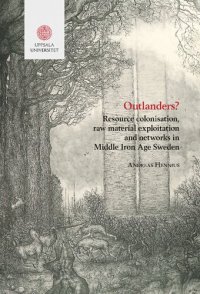
Ebook: Outlanders?: Resource Colonisation, Raw Material Exploitation and Networks in Middle Iron Age Sweden
Author: Andreas Hennius
- Genre: History // Archaeology
- Series: Occasional Papers in Archaeology 73
- Year: 2021
- Publisher: Uppsala University
- City: Uppsala
- Language: English
- pdf
The Middle Iron Age, around 300–650 CE, was characterised by extensive transformations across many aspects of society in the area of present-day Sweden. Within the central agricultural regions of the southern parts of the country, these changes are evident in a re-organisation of the settlements, renewed burial practices, the building of large-scale monuments, as well as increased militarisation, social stratification and an increase in imported objects.
This thesis addresses an additional aspect of Middle Iron Age societal change, namely an increase in the utilisation of raw materials and resources from forested and coastal landscapes situated beyond the settled farm. These non-agrarian landscapes are commonly referred to as the outlands. In previous research, the increased utilisation of the outlands has in general been understood as part of a Viking Age expansion.
The main contribution of the study is that it highlights how the main elements of outland exploitation, such as mass production and trade in valuable non-agrarian resources, can be dated earlier than has been previously thought. Moreover, the thesis argues that outland resource colonisation was an important driving force for the societal developments that took place during the Middle Iron Age, and is crucial for our understanding of later time periods.
This thesis addresses an additional aspect of Middle Iron Age societal change, namely an increase in the utilisation of raw materials and resources from forested and coastal landscapes situated beyond the settled farm. These non-agrarian landscapes are commonly referred to as the outlands. In previous research, the increased utilisation of the outlands has in general been understood as part of a Viking Age expansion.
The main contribution of the study is that it highlights how the main elements of outland exploitation, such as mass production and trade in valuable non-agrarian resources, can be dated earlier than has been previously thought. Moreover, the thesis argues that outland resource colonisation was an important driving force for the societal developments that took place during the Middle Iron Age, and is crucial for our understanding of later time periods.
Download the book Outlanders?: Resource Colonisation, Raw Material Exploitation and Networks in Middle Iron Age Sweden for free or read online
Continue reading on any device:

Last viewed books
Related books
{related-news}
Comments (0)